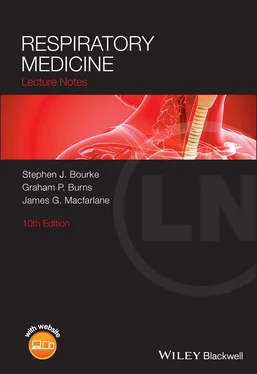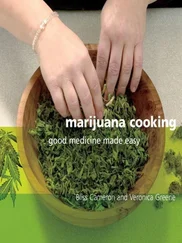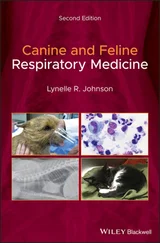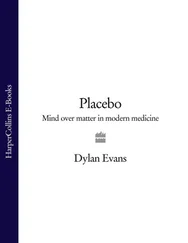1 ...6 7 8 10 11 12 ...25 To understand this, we first have to remember why we breathe. Whilst oxygen is an essential requirement for life, we do not need the high level of oxygenation usually seen in health for survival. We operate with a substantial margin of safety. This safety margin allows us to vary our ventilation (sometimes at the expense of a normal oxygen level) in order to precisely regulate the CO 2content of the blood. CO 2is intimately linked with pH. Whilst it is possible to live for years with lower than normal oxygen levels, we cannot survive long at all with pH outside the normal range. Keeping pH in the normal range is therefore the priority, and CO 2rather than O 2is the principal driver of ventilation.
In health, PCO 2is maintained at very close to 5.3 kPa (40 mmHg). Any increase above this level provokes hyperventilation; any dip leads to hypoventilation. In practice, PCO 2is so tightly regulated that such fluctuations are not observable. Even when substantial demands are placed on the respiratory system, such as hard physical exercise (with its dramatic increase in O 2utilisation and CO 2production), the arterial PCO 2will barely budge.
Like any finely tuned sensor, however, if the respiratory system is exposed to concentrations it’s not designed to deal with for long periods, it will tend to break. In some patients with chronic lung disease (commonly COPD), the CO 2sensor begins to fail. Underventilation then occurs, and, over time, PCO 2drifts upward (and PO 2downward). Despite the fall in PO 2, initially at least, nothing much happens. Although there is a separate sensor monitoring levels of hypoxia, it remains blissfully unconcerned by modest reductions in PO 2(because of the margin of safety just discussed). Only when PO 2reaches a levels that could have an impact on bodily function (around 8 kPa; 60 mmHg) does the hypoxic sensor wake up and decide to take action. Happy to tolerate a certain degree of hypoxia, it won’t allow the PO 2to fall below this important threshold, which is marginal to the sustainability of life.
When this occurs, hypoxia then takes up the reins as the driver to ventilation and prevents what would have been a progressive decline to death. Once an individual is dependent on this ‘ hypoxic drive’, a degree of hypoxia is (obviously) necessary to drive ventilation. This is not always appreciated. At times, a ‘high‐flow’ oxygen mask may be applied to a patient by a well‐meaning doctor in an attempt to raise the PO 2to a more ‘normal’ level. But no hypoxia means no drive to breathe. The result can be catastrophic underventilation, which, if not dealt with properly, can be fatal. When treating hypoxic patients who may have chronic lung disease, until their ventilatory drive is known (from arterial blood gas analysis), oxygen should be judiciously controlled to achieve an oxygen saturation (based on pulse oximetry) between 88% and 92%. In this ‘Goldilocks’ zone, the patient will not die of hypoxia and ventilation is unlikely to be depressed to any significant degree.
 KEY POINTS
KEY POINTS
The essential function of the lungs is the exchange of oxygen and carbon dioxide between the blood and the atmosphere.
Ventilation is the process of moving air in and out of the lungs, and it depends on the tidal volume, respiratory rate, resistance of the airways and compliance of the lungs. A fall in ventilation leads to a rise in PCO2 and a fall in PO2: type 2 respiratory failure.
Derangement in the matching of ventilation and perfusion in the lungs (which may be caused by any disease intrinsic to the lung or its vasculature) leads to a fall in PO2: type 1 respiratory failure.
The respiratory centre in the brain stem is responsible for the control of breathing. pH and PCO2 are the primary stimuli to ventilation. Hypoxia only acts as a stimulant when PO2 < about 8 kPa.
 FURTHER READING
FURTHER READING
1 Brewis RAL, White FE. Anatomy of the thorax. In: Gibson GJ, Geddes DM, Costabel U, Sterk PJ, Corrin B, eds. Respiratory Medicine. Edinburgh: Elsevier Science, 2003: 3–33.
2 Maynard RL, Pearce SJ, Nemery B, Wagner PD, Cooper BG. Cotes’ Lung Function. Oxford: Wiley Blackwell, 2020.
3 Gibson GJ. Clinical Tests of Respiratory Function. Oxford: Chapman and Hall, 2009.
4 West JB. Pulmonary Pathophysiology – The Essentials. Baltimore, MD: Williams and Wilkins, 1987.
Multiple choice questions
1 1.1 The principal muscle(s) involved in inspiration is (are):the diaphragmrectus abdoministhe scalene musclessternocleidomastoidsthe intercostals
2 1.2 Lung compliance:is reduced as lung volume increasesis reduced in emphysemais increased in lung fibrosisis the change in pleural pressure per unit change in lung volumeis the principal factor determining forced expiratory flow
3 1.3 In relation to airway resistance:overall airway resistance increases as lung volume increasesin health, at high lung volume, the greater part of airway resistance is situated in the central airwaysairway resistance is reduced in emphysema due to diminished retractile force on the airwayairway resistance is proportional to the cubed power of the radius of the airway (r3)forced expiratory flow is unrelated to effort
4 1.4 In relation to ventilation (V) and perfusion (Q): the upper zones of the lungs are ventilated more than the lower zonesthe upper zones of the lungs receive more perfusion than the lower zonesV/Q is greater in the lower zonesVQ matching is essential to gas exchangereduced overall ventilation leads to a fall in PCO2
5 1.5 In a patient breathing room air at sea level, the arterial blood gases were: pH 7.36, PCO 2 3.2 kPa, PO 2 12 kPa, aHCO 3 – 19, base excess –5. The alveolar–arterial gradient is:2.5 kPa5.0 kPa5.5 kPa6.5 kPa10.0 kPa
6 1.6 During expiration, the diaphragm: risesremains unchangedshortensstiffenscauses a fall in intrathoracic pressure
7 1.7 A reduction in ventilation leads to: a rise in PaCO2 and PaO2a fall in PaCO2 and PaO2a rise in PaCO2 and a fall in PaO2a fall in PaCO2 and a rise in PaO2a rise in PaCO2 and no change in PaO2
8 1.8 VQ mismatching leads to: a rise in PaCO2 and no change in PaO2a fall in PaCO2 and PaO2a rise in PaCO2 and a fall in PaO2a fall in PaCO2 and a rise in PaO2no change in PaCO2 and a fall in PaO2
9 1.9 In relation to the control of breathing: hypoxia is irrelevanta rise of 0.2 kPa in pCO2 is required before ventilation is driven to increasea metabolic acidosis can increase ventilation and therefore PaO2a fall in blood pH will tend to reduce ventilationa fall in pH implies there has been a reduction in ventilation
10 1.10 In relation to airway resistance: resistance is unrelated to lung volumethe site of principal resistance moves to the smaller airways as lung volume is reducedmaximum forced expiratory flow can be achieved at mid lung volumeFEF25–75 provides accurate information on the calibre of the large airwaysFEF25–75 provides accurate information on the calibre of the small airways
1 1.1 AThe diaphragm is the main muscle of inspiration; contraction forces the abdominal contents down, creating a relative vacuum in the thorax which ‘sucks’ air into the lungs.
2 1.2 ALung compliance is the change in lung volume brought about by a unit change in transpulmonary (intrapleural) pressure. The fibrotic lung is less compliant. The emphysematous lung is more compliant. In any lung, its capacity to stretch (expand) is reduced as volume increases ie it gets less compliant.
Читать дальше

 KEY POINTS
KEY POINTS FURTHER READING
FURTHER READING









